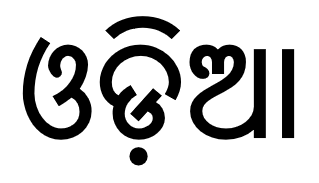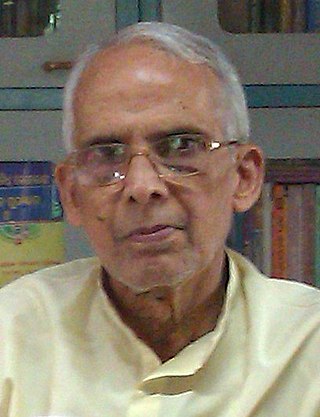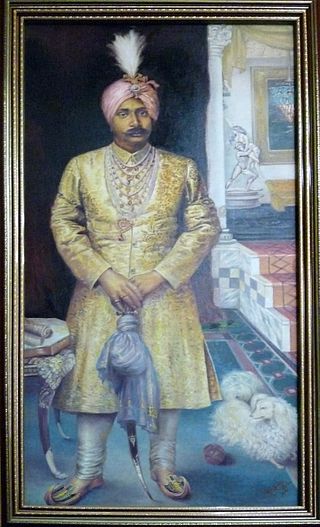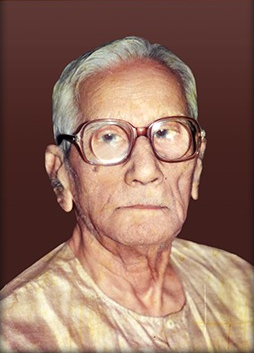Related Research Articles

Odia is a classical Indo-Aryan language spoken in the Indian state of Odisha. It is the official language in Odisha, where native speakers make up 82% of the population, and it is also spoken in parts of West Bengal, Jharkhand, Andhra Pradesh and Chhattisgarh. Odia is one of the many official languages of India; it is the official language of Odisha and the second official language of Jharkhand. The Odia language has various dialects varieties, including the Baleswari Odia, Kataki, Ganjami Odia, Sundargadi Odia, Sambalpuri, Desia and Tribal Community dialects who spoken by the tribals groups in Odisha who adopted the Odia language.

Ramakanta Rath is one of the most renowned modernist poets in the Odia literature. Heavily influenced by the poets such as T. S. Eliot and Ezra Pound, Rath experimented greatly with form and style. The quest for the mystical, the riddles of life and death, the inner solitude of individual selves, and subservience to material needs and carnal desires are among this philosopher-poet's favorite themes. His poetry betrays a sense of pessimism along with counter-aesthetics, and he steadfastly refuses to put on the garb of a preacher of goodness and absolute beauty. His poetry is full of melancholy and laments the inevitability of death and the resultant feeling of futility. The poetic expressions found in his creations carry a distinct sign of symbolic annotations to spiritual and metaphysical contents of life. Often transcending beyond ordinary human capabilities, the poet reaches the higher territories of sharp intellectualism. The contents have varied from a modernist interpretation of ancient Sanskrit literature protagonist Radha in the poem "Sri Radha" to the ever-present and enthralling death-consciousness espoused in "Saptama Ritu".

Ganjam district is a district in the Indian state of Odisha. Ganjam's total area is 8,206 km² (3,168 mi²). The district headquarters is Chhatrapur. Ganjam is divided into three sub-divisions: Chhatrapur, Berhampur, and Bhanjanagar. As of 2011, it is the most populous district of Odisha.

Gajapati district is a district of Odisha State in India. It was carved out of Ganjam District on 2 October, 1992. As of 2011 it is the third least populous district of Odisha, after Debagarh and Boudh. Gajapati district was named after Krushna Chandra Gajapati Narayan Deb, the King of the Paralakhemundi estate and the first Prime Minister of Orissa, who is remembered for his contribution to the formation of a separate state, and inclusion of his estate in Odisha. The district headquarters at Paralakhemundi, formerly a Zamindari, has been clustered within a radius of approximately 5 kilometers around the geometric centre of Paralakhemundi.

Pratibha Ray is an Indian academic and writer of Odia-language novels and stories. For her contribution to the Indian literature, Ray received the Jnanpith Award in 2011. She was awarded the Padma Bhushan in 2022.

Manoj Das was an Indian author who wrote in Odia and English. In 2000, Manoj Das was awarded the Saraswati Samman. He was awarded Padma Shri in 2001, the fourth-highest Civilian Award in India, and Padma Bhusan in 2020, the third-highest Civilian Award in India for his contribution to the field of Literature & Education.
Odia literature is literature written in the Odia language, mostly from the Indian state of Odisha. The modern Odia language is mostly formed from Tadbhava words with significant Sanskrit (Tatsama) influences, along with loanwords from Desaja, English, Hindustani (Hindi/Urdu), Persian, and Arabic. Its earliest written texts date from around 1000 CE. The earliest Odia newspaper was Utkala Deepika, first published on August 4, 1866.

Sitakant Mahapatra is an Indian poet and literary critic in Odia as well as English. He served in the Indian Administrative Service (IAS) from 1961 until he retired in 1995, and has held ex officio posts such as the Chairman of National Book Trust, New Delhi since then.

Brajanath Ratha was an Indian poet who wrote in Odia. Brajanath Ratha is internationally recognised and is the recipient of many prestigious awards like the Odisha Sahitya Academy Award, Vishuba Award, Gokarnika Award, First Shudramuni Sahitya Award and Honoured by South Korea's Ambassador, from Global Cooperation Society International, Seol, Republic of Korea for Contribution in World welfare, Cooperation and Services.

Krushna Chandra Gajapati KCIE, also known as Captain Maharaja Sri Sri Sri Krushna Chandra Gajapati Narayana Deva KCIE, was one of the key personality, helping the creation of Odisha. He was a scion of Paralakhemundi Estate and the owner of Delanga estate of Puri district of Odisha. His family belonged to the great Eastern Ganga Dynasty. He was the first Prime Minister of Odisha. The present-day Gajapati District of Odisha was named after him.

Mayadhar Mansingh was an Indian poet and writer who wrote in Odia. He received the Padma Shri, the fourth-highest civilian award in India, in 1967.

Subrat Kumar Prusty is an Indian Odia-language scholar, activist, social entrepreneur, literary critic and author. He is Member Secretary of the Institute of Odia Studies and Research, Bhubaneswar, Odisha. He was instrumental in preparing the research documents, advocating the awarding of Classical Language status to Odia, forming Central Institute of Classical Odia, Odia University and implementation of the Odisha Official Language Act, 1954. He was awarded the Presidential Certificate of Honour and Maharshi Badrayan Vyas Samman – 2019 for Classical Odia.

Dr. Radhanath Rath was a newspaper editor, freedom fighter, social worker and politician from Odisha. He was the editor of The Samaja, one of the leading newspapers of Odisha.

Prafulla Kar was an Odia musician, singer, lyricist, writer and columnist. He was also famous for his Odissi Music recital. He received Padma Shri, the fourth highest civilian award by the Government of India in 2015 for his contribution in the field of arts.
Prabhat Nalini Das was an Indian public intellectual, academic and university president. She served as a professor of English and head of the English Department at Lady Shri Ram College, Delhi University; Indian Institute of Technology, Kanpur; Utkal University and Ranchi University. She was the first Director/Dean of the Humanities Division at the Indian Institute of Technology, Kanpur; Founder-Professor and Head of the Department of English at Utkal University for almost 19 years, and Chairman of Utkal University's Post Graduate Council; and the Pro-Vice-Chancellor of North Eastern Hill University, a Central University established by an act of the Parliament of India, with independent charge of its Kohima, Nagaland campus.
Radha Mohan Gadanayak (1911–2000) was an Indian poet of Odia literature, known for his ballads and poetic creations. The poet, considered by many as one of the major Odia poets of this century, was a recipient of the Sahitya Akademi Award, which he received, in 1975, for his poem anthology, Surya O Andhakar. The Government of India awarded him the fourth highest civilian award of Padma Shri in 1990.

Subrat Kumar Prusty is an Indian Odia-language scholar, activist, social entrepreneur, literary critic and author. He is Member Secretary of the Institute of Odia Studies and Research, Bhubaneswar, Odisha. He was instrumental in preparing the research documents, advocating the awarding of Classical Language status to Odia, forming Central Institute of Classical Odia, Odia University and implementation of the Odisha Official Language Act, 1954. He was awarded the Presidential Certificate of Honour and Maharshi Badrayan Vyas Samman – 2019 for Classical Odia.
Tarun Kanti Mishra is an Indian Odia story writer. More than 15 of his books have been published. He got Central Sahitya Akademi Award, Odisha Sahitya Academy award and Sarala Award for his contribution in literature and was an IAS in profession and retired after being head of the administration department of Odisha. Then he also worked as Chief Information Commissioner of Odisha.
Gouri Kumar Brahma was an academic, literary critic, orator and writer. His works are mainly in Odia and Sanskrit. He was popular for his talks on Jagannath culture and literature of Upendra Bhanja in Odia, English Sanskrit and Hindi. He died at Bhubaneswar.

Manorama Mohapatra was an Indian writer, poet, and editor, working primarily in the Odia language. She wrote forty books consisting of novels and poetry, and edited an Odia newspaper, The Samaj. She was the recipient of several literary awards, including Odisha state's highest literary honor, the Odisha Sahitya Akademi Award in 1984. She was the first woman to be elected president of the Odisha State Sahitya Akademi, a literary organization for the state of Odisha.
References
- 1 2 3 4 5 6 7 8 9 "Padmashree Satyanarayana Rajguru". Gajapati. 2015. Retrieved 13 June 2015.
- 1 2 3 4 "Memories of My Father" (PDF). Government of Odisha. 2010. Retrieved 13 June 2015.
- 1 2 "Padma Shri" (PDF). Padma Shri. 2015. Retrieved 11 November 2014.
- ↑ Sisir Kumar Das (2000). History of Indian Literature, Volume 1. Sahitya Akademi. p. 815. ISBN 9788172010065.
- ↑ "Inscriptions of Orissa". Cornell University Library. 2015. Retrieved 13 June 2015.
- ↑ "Jayadeva (1200 AD)" (PDF). Poem Hunter. 2015. Retrieved 13 June 2015.
- ↑ "Historical Background of Gopinath & Radha Krishna" (PDF). Utkal University. 2015. Retrieved 13 June 2015.
- ↑ Satyanarayana Rajguru (1994). Mo Jibana Sangram. Sri Balabhadra Rath. ASIN B0018Y3VN0.
- ↑ "Odia Lipira Krama Bikash". DAV College. 2015. Archived from the original on 15 June 2015. Retrieved 13 June 2015.
- ↑ "History of theGangas" (PDF). Government of Odisha. 2015. Retrieved 13 June 2015.
- ↑ "Ranpur plates of Dharmaraja" (PDF). Shodhganga. 2015. Retrieved 13 June 2015.
- ↑ "Oriya Inscription on a Stone Image". South Asia Archive. 2015. Retrieved 13 June 2015.
- ↑ Nihar Ranjan Patnaik (2015). Economic History of Orissa. Indus Publishing. ISBN 9788173870750 . Retrieved 13 June 2015.
- ↑ "Akademi Awards (1955-2014)". Sahitya Akademi. 2015. Retrieved 13 June 2015.
- ↑ "Sarala Samman 2011 to Ramakant Rath". Incredible Orissa. 2015. Retrieved 13 June 2015.